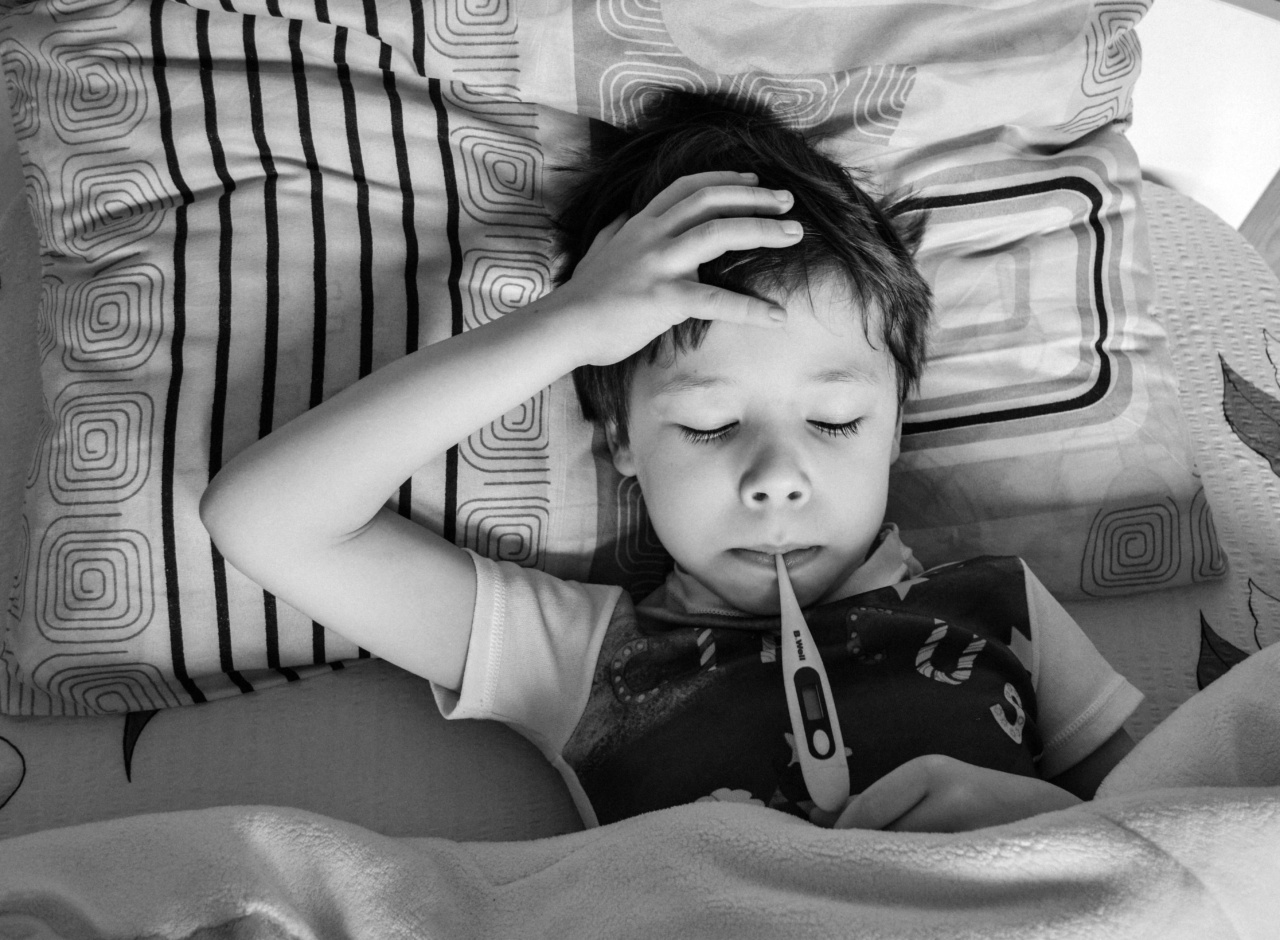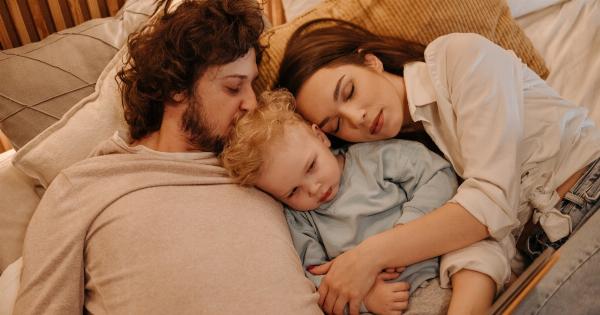Obstructive sleep apnea (OSA) is a sleep disorder that affects people of all ages, including children.
It is characterized by repeated episodes of partial or complete blockage of the upper airway during sleep, leading to disrupted breathing and decreased oxygen levels in the blood. OSA can have serious implications for a child’s health and development if left untreated. One common symptom of OSA in children is snoring. However, not all snoring indicates a problem.
In this article, we will discuss how to tell if snoring is a sign of obstructive sleep apnea in kids and the appropriate steps to take for diagnosis and treatment.
What is Obstructive Sleep Apnea in Kids?
Obstructive sleep apnea occurs when there is a physical obstruction in the upper airway that prevents normal breathing during sleep.
In children, the most common cause of OSA is enlarged tonsils and adenoids, which can block the flow of air through the nose and throat. Other factors that may contribute to OSA include obesity, allergies, and craniofacial abnormalities.
Signs and Symptoms of Obstructive Sleep Apnea in Kids
While snoring is a common symptom of OSA in children, it is important to look for other signs and symptoms as well, as not all snoring is indicative of a sleep disorder. Some of the common signs and symptoms of OSA in kids include:.
1. Snoring
Snoring is often louder and more persistent in children with obstructive sleep apnea. It may be accompanied by gasping, choking, or snorting sounds during sleep. However, it’s important to note that not all children who snore have sleep apnea.
2. Pauses in Breathing
Children with sleep apnea may experience pauses in their breathing during sleep. These pauses are usually followed by a snort, gasp, or choking sound as the child’s body tries to reopen the airway.
3. Restless Sleep
Kids with obstructive sleep apnea often have restless sleep patterns. They may toss and turn frequently, wake up frequently during the night, or experience night sweats. These disruptions can lead to daytime sleepiness and behavioral problems.
4. Daytime Sleepiness
Due to disrupted sleep, children with OSA may exhibit excessive daytime sleepiness.
They may struggle to stay awake during the day, have difficulty concentrating, and may even fall asleep in inappropriate situations, such as during school or while watching TV.
5. Behavioral Problems
OSA can affect a child’s behavior and mood. Kids with sleep apnea may exhibit irritability, aggression, hyperactivity, and poor impulse control.
They may also experience difficulties in school, such as poor academic performance and attention problems.
6. Bedwetting
Bedwetting, also known as nocturnal enuresis, is another potential sign of obstructive sleep apnea in children.
The disruption in sleep caused by OSA can affect the child’s ability to wake up when their bladder is full, leading to bedwetting episodes.
7. Poor Growth
Untreated OSA can impact a child’s growth and development. The decreased oxygen levels during sleep can interfere with the production of growth hormone, potentially causing growth delays in affected children.
8. Morning Headaches
Kids with sleep apnea may wake up with frequent headaches in the morning. These headaches are often described as dull and may accompany other symptoms, such as sensitivity to light or noise.
9. Frequent Upper Respiratory Infections
Children with enlarged tonsils and adenoids, which often contribute to OSA, may experience frequent upper respiratory infections. The blockage of the airway caused by these enlarged tissues makes it easier for bacteria and viruses to cause infections.
10. Nocturnal Gastroesophageal Reflux
Obstructive sleep apnea can also be associated with nocturnal gastroesophageal reflux disease (GERD).
The disrupted breathing and increased abdominal pressure during sleep can cause stomach acid to flow back into the esophagus, leading to symptoms like heartburn and discomfort.
Diagnosing Obstructive Sleep Apnea in Kids
If you suspect that your child may have obstructive sleep apnea, it is essential to consult their pediatrician or a sleep specialist. The following steps may be involved in diagnosing OSA:.
1. Medical History
The doctor will first gather information about your child’s symptoms, medical history, and any family history of sleep disorders.
Be prepared to provide details about your child’s snoring patterns, sleep disruptions, and other relevant information.
2. Physical Examination
A physical examination will be performed to assess any physical abnormalities that may contribute to OSA. The doctor may examine the child’s mouth, nose, and throat to check for enlarged tonsils and adenoids or any other obstructions.
3. Sleep Study
A sleep study, also known as polysomnography, is the most effective way to diagnose OSA. It involves monitoring your child’s sleep patterns and various body functions during a night of sleep.
This test is usually conducted in a specialized sleep center or can sometimes be done at home using portable monitoring devices.
4. Further Testing
In some cases, further testing may be required to assess the severity of obstructive sleep apnea or to determine other underlying factors contributing to the sleep disorder.
This may include imaging tests, such as X-rays or an MRI, to evaluate the structure of the airway or identify any anatomical abnormalities.
Treating Obstructive Sleep Apnea in Kids
The treatment for obstructive sleep apnea in children depends on the severity of the condition and the underlying cause. Common treatment options may include:.
1. Adenotonsillectomy
Removing the enlarged tonsils and adenoids is often the first line of treatment for sleep apnea in children. This surgical procedure can improve the airflow and eliminate the obstruction in the upper airway.
Adenotonsillectomy is usually effective in relieving symptoms in most children.
2. Continuous Positive Airway Pressure (CPAP)
In some cases, especially if surgery is not appropriate or does not fully resolve the sleep apnea, the use of a continuous positive airway pressure (CPAP) machine may be recommended.
This device delivers a continuous stream of air through a mask worn over the nose or mouth, helping to keep the airway open during sleep.
3. Weight Management
If obesity is a contributing factor to sleep apnea, weight management through a combination of diet, exercise, and lifestyle changes may be recommended. Losing weight can help reduce the severity of OSA symptoms and improve overall health.
4. Dental Devices
In some cases, dental devices such as oral appliances may be prescribed to help keep the airway open during sleep. These devices are custom-made to fit the child’s mouth and can be helpful for mild to moderate cases of obstructive sleep apnea.
5. Treatment of Associated Conditions
If allergies, nasal congestion, or other underlying conditions contribute to OSA, appropriate treatment for these conditions may be recommended.
This can include allergy medications, nasal sprays, or other interventions to improve nasal breathing and reduce the risk of obstructed airflow during sleep.
Lifestyle Changes to Improve Sleep Quality
In addition to medical interventions, certain lifestyle changes can help improve sleep quality for children with obstructive sleep apnea:.
1. Establish a Consistent Sleep Routine
Having a regular sleep schedule can help regulate a child’s body clock and promote better sleep. Set consistent bedtimes and wake-up times, even on weekends.
2. Create a Relaxing Sleep Environment
Create a comfortable and relaxing sleep environment for your child. Keep the bedroom cool, dark, and quiet. Use white noise machines or earplugs if necessary to block out external noises.
3. Limit Screen Time Before Bed
Electronic devices emit blue light that can interfere with sleep. Avoid screens, such as smartphones, tablets, or TVs, for at least an hour before bedtime.
4. Encourage Regular Exercise
Regular physical activity can help promote better sleep. Encourage your child to engage in age-appropriate exercises or activities to expend energy during the day.
5. Avoid Heavy Meals and Stimulants
Ensure your child avoids heavy meals and stimulants before bed, such as caffeinated beverages or sugary snacks, which can disrupt sleep patterns.
Conclusion
Obstructive sleep apnea is a common sleep disorder affecting children, and snoring is often a significant symptom. However, not all snoring indicates a problem with sleep apnea.
It is essential to recognize other signs and symptoms and consult a medical professional for an accurate diagnosis. Early detection and appropriate treatment of OSA in children are crucial for their overall health and well-being.
If you suspect your child may have obstructive sleep apnea, it is important to seek medical advice to ensure they receive proper evaluation and treatment.





























